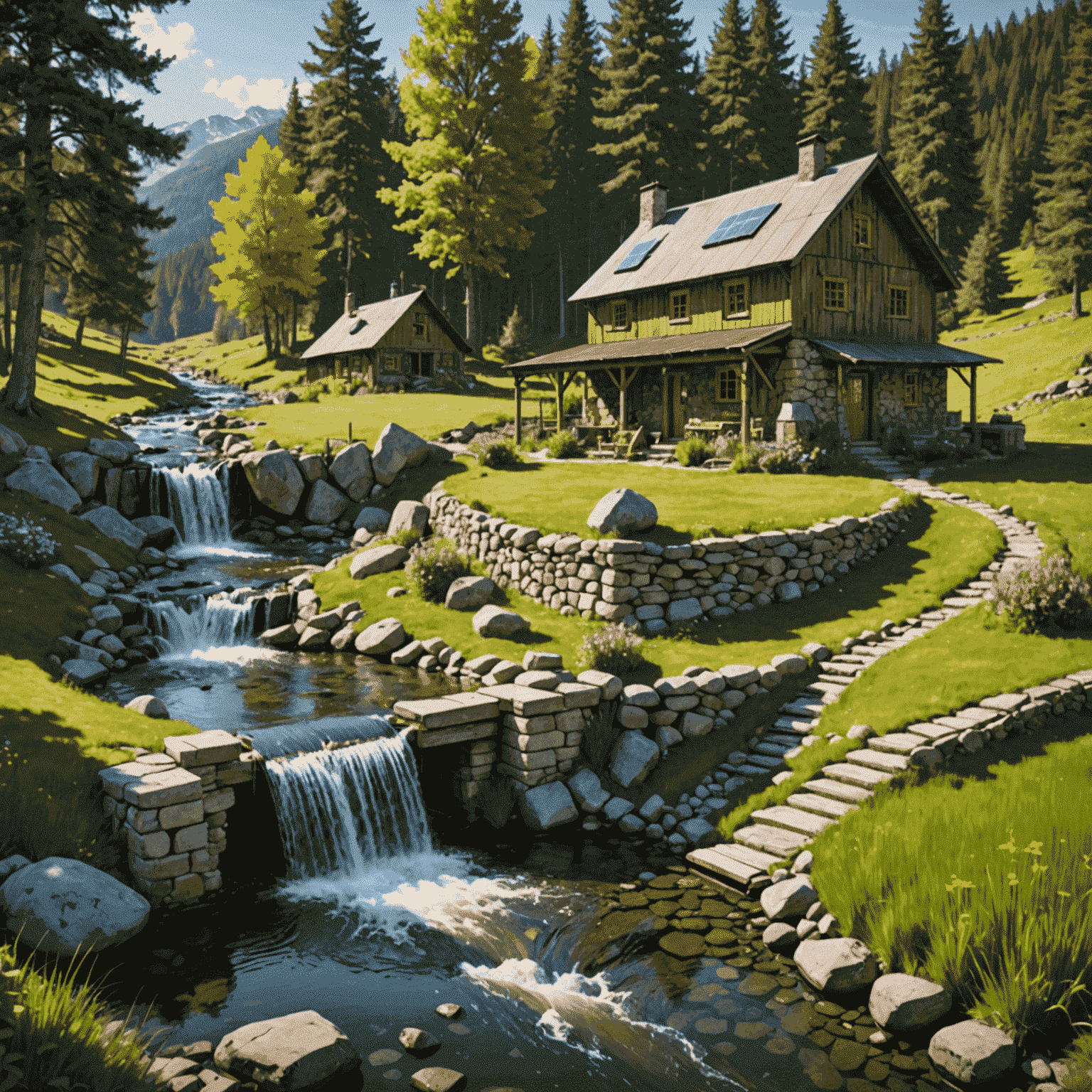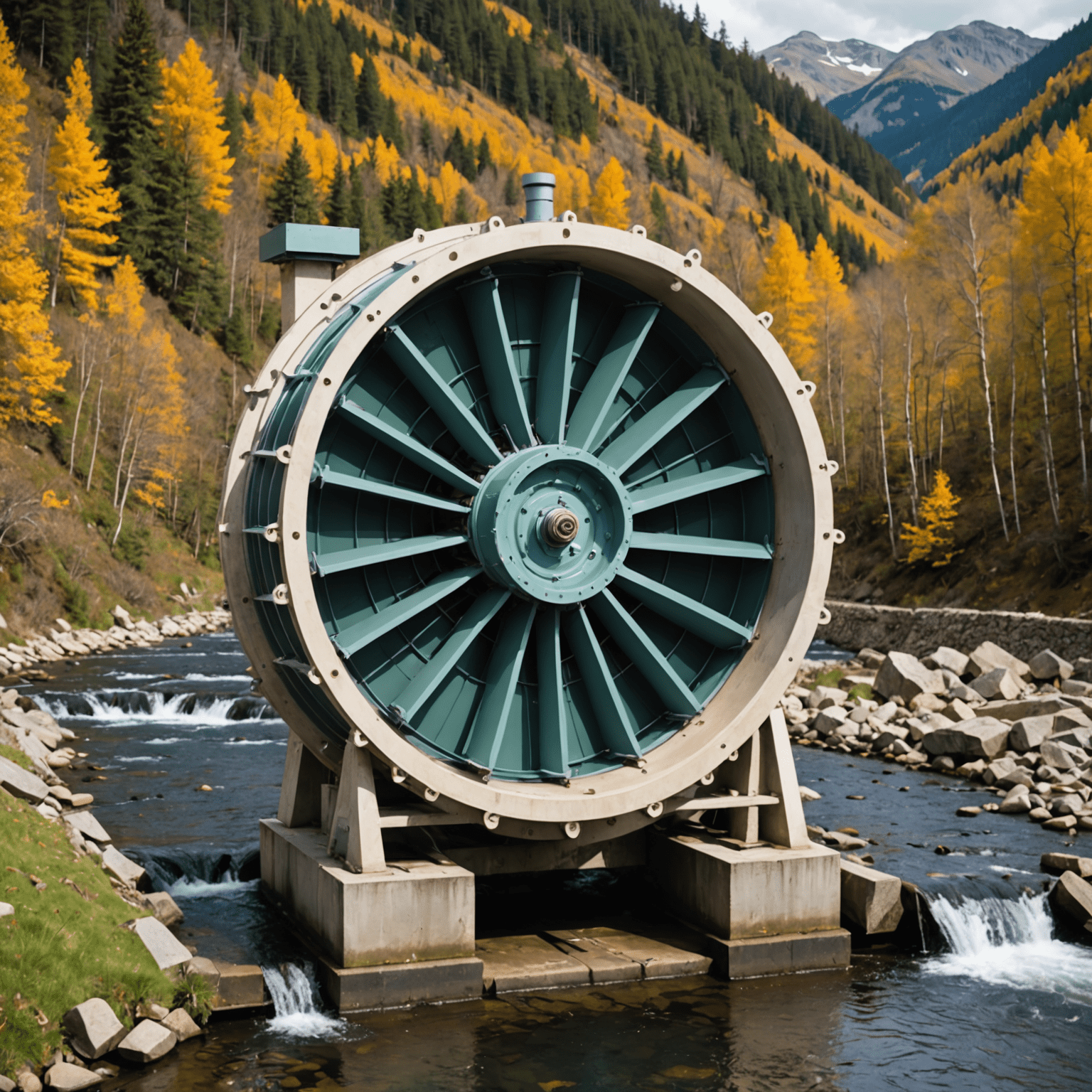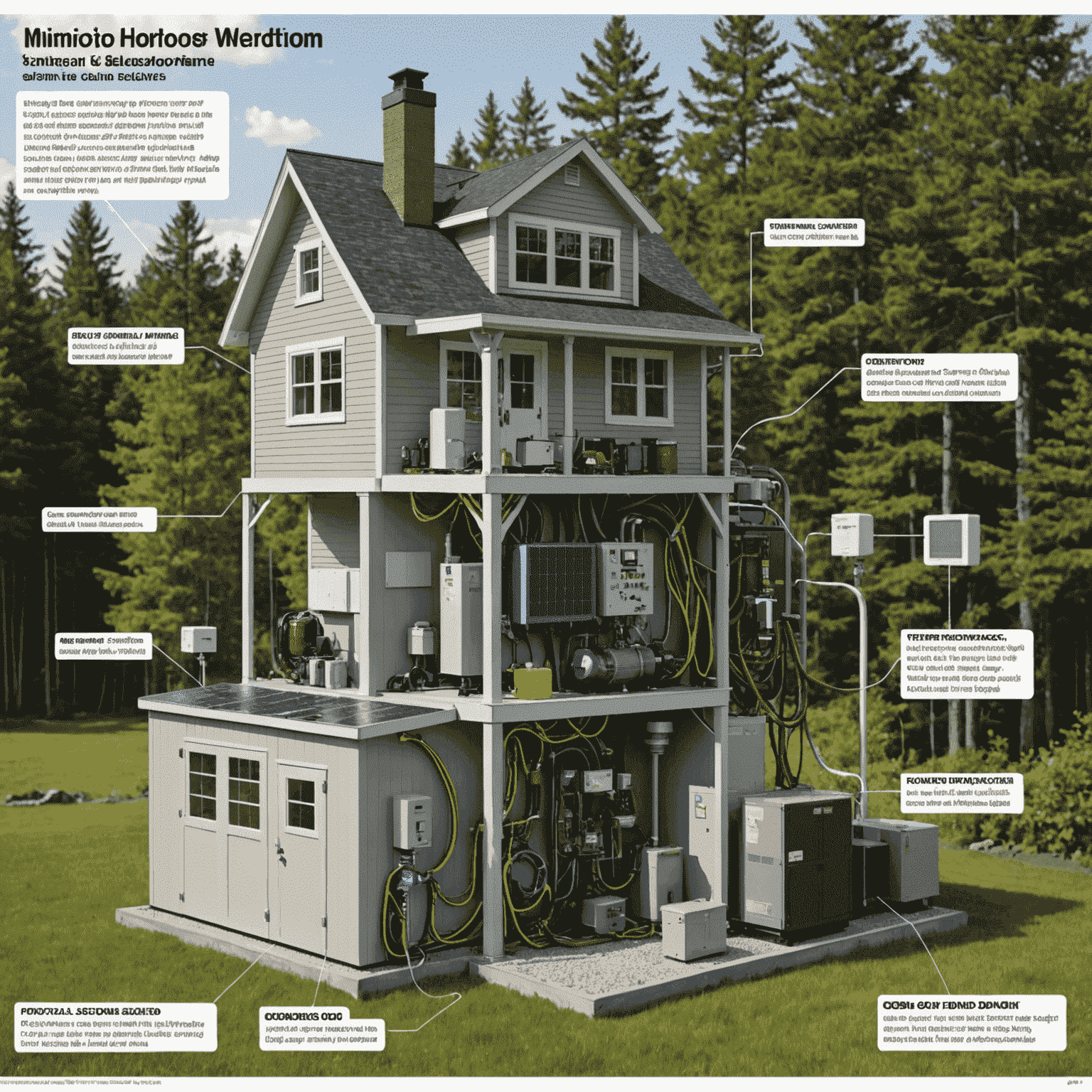DIY Micro-Hydro Systems for Homesteads

Harness the power of flowing water on your property with a DIY micro-hydro system. This guide will walk you through the process of setting up a small-scale hydroelectric system, bringing you one step closer to energy independence.
Understanding Micro-Hydro Power
Micro-hydro systems are an excellent way to generate clean, renewable electricity for homesteads with access to flowing water. These systems can provide a consistent power supply, often outperforming solar panels in terms of reliability and output in suitable locations.
Step 1: Assess Your Water Resource
Before diving into construction, you need to evaluate your water source:
- Measure the flow rate of your stream or river
- Calculate the head (vertical drop) of water available
- Determine the potential power output using the flow rate and head
Step 2: Choose Your Turbine
Select a turbine type based on your site's characteristics:
- Pelton wheel for high head, low flow sites
- Cross-flow turbine for low head, high flow locations
- Turgo turbine for medium head and flow scenarios

Step 3: Design Your Intake System
Create an efficient water intake system:
- Install a debris screen to prevent leaves and branches from entering
- Design a settling basin to remove sediment
- Use appropriately sized piping to transport water to the turbine
Step 4: Set Up the Powerhouse
Construct a small building to house your equipment:
- Place the turbine and generator on a solid foundation
- Install necessary electrical components (inverter, batteries, charge controller)
- Ensure proper ventilation and protection from the elements
Step 5: Install the Tailrace
Design an effective system to return water to the stream:
- Create a channel that prevents erosion
- Ensure the outflow doesn't negatively impact local ecosystems
Step 6: Connect to Your Home
Safely wire your micro-hydro system to your home's electrical system:
- Use appropriate gauge wiring for the distance and power output
- Install safety disconnects and grounding systems
- Consider hiring a licensed electrician for this step

Maintenance and Care
To keep your micro-hydro system running smoothly:
- Regularly clean debris from the intake screen
- Inspect and lubricate moving parts as recommended
- Monitor water levels and adjust flow as needed
- Conduct annual checks on all electrical components
Legal Considerations
Before starting your project, research local regulations:
- Obtain necessary water rights and permits
- Comply with environmental protection laws
- Ensure your system meets local building and electrical codes
By following these steps, you can create a sustainable, off-grid power solution for your homestead. A well-designed micro-hydro system can provide years of clean, reliable energy, bringing you closer to energy independence and reducing your carbon footprint.
Remember, while DIY projects can be rewarding, always prioritize safety and consult with professionals when dealing with water and electrical systems. With careful planning and execution, your micro-hydro system can be a valuable addition to your self-sufficient lifestyle.